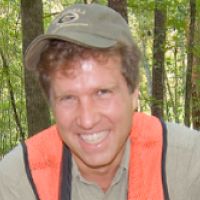Billings et al., 2019
Anthropogenic Declines in Deep Roots Constrain Deep Soil Organic Carbon Forms and Fluxes
Billings, Sharon A, Pamela L Sullivan, Ligia Souza, Emma Hauser, Terry Loecke, Kyler Lang, Charles W Rice, Daniel Hirmas, Daniel deB. Richter, Alexander Cherkinsky, Daniel Markewitz (2019)
American Geophysical Union Fall Meeting, San Francisco, CA, December 9-13, 2019
-
Calhoun, INVESTIGATOR
-
Calhoun, Shale Hills, INVESTIGATOR, COLLABORATOR
-
Calhoun, GRAD STUDENT
-
Calhoun, GRAD STUDENT
-
Calhoun, INVESTIGATOR
-
Calhoun, INVESTIGATOR
-
Calhoun, INVESTIGATOR
Plain English Summary
Though deep soil carbon is a large part of Earth's terrestrial carbon budget, the relative inaccessibility of deep soils makes it difficult to study how deep soil organic carbon is formed and lost. Our recent work demonstrates how human land conversion results in extremely limited deep root abundances in many regions of the globe. Here, we detail for three biomes (forest, tallgrass prairie, shortgrass prairie) how losses of deep roots can influence the amount and form of deep soil carbon. In prairies, we show how soil structural characteristics that can govern the preservation or loss of soil organic carbon can change with deep root losses. We show how deep roots play an outsized role in these processes, and how anthropogenic modification of ecosystems at the surface has consequences for Earth's climate-sensitive carbon cycle far more deeply in soils than is typically appreciated.
Abstract
Conversion of land from perennial, native ecosystems to annual agricultural crops generates a well-documented net loss of soil organic carbon (SOC) in surface horizons. However, deep within the soil profile where human influences on biological processes and soil structural states are quantified relatively rarely, sustained annual agricultural production results in a persistent dearth of roots deep within the soil profile. Recent efforts estimate the degree to which this land conversion has truncated roots in many regions of the globe, and how a decline in deep root inputs in the top 2 m of forest soils can result in changes in deep SOC forms propagating to 5 m depth. Here, we detail how root inputs of multiple size classes deep within soil profiles (to 2 m) decline in prairies and forests converted to agricultural use. We quantify loss of root stocks with agricultural conversion and demonstrate how agricultural lands can exhibit no root presence at 2 m while roots in native perennial systems can occupy up to 30% of the horizon at that depth. We combine stable C isotopic and radiocarbon signatures, exo-enzyme assays, and quantification of different SOC forms to demonstrate how reductions in deep root biomass prompt declines in inputs of fresh photosynthate and altered relative abundances of diverse forms of deep SOC. In prairie soils, we further demonstrate how declines in deep root inputs can prompt changes in multiple soil structural attributes important for water flow and microbial activity. From these data, we infer the means by which fluxes of SOC pools can be altered deep within the subsurface of surficially-disturbed soils, prompting feedbacks that ultimately govern deep SOC pool sizes. Anthropogenic activities are long known to influence soil biological and structural characteristics in surface horizons, and chemical attributes in both surficial and deep horizons. We illuminate how soil biological and structural responses to anthropogenic activities propagate far deeper than is typically appreciated, constraining the quantity, form, and fluxes of deep SOC.
Citation
Billings, Sharon A, Pamela L Sullivan, Ligia Souza, Emma Hauser, Terry Loecke, Kyler Lang, Charles W Rice, Daniel Hirmas, Daniel deB. Richter, Alexander Cherkinsky, Daniel Markewitz (2019): Anthropogenic Declines in Deep Roots Constrain Deep Soil Organic Carbon Forms and Fluxes. American Geophysical Union Fall Meeting, San Francisco, CA, December 9-13, 2019.
Explore Further







